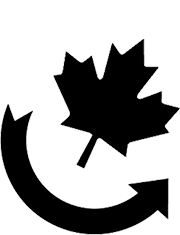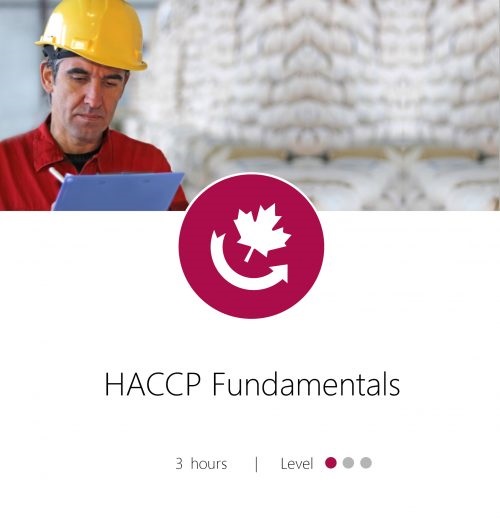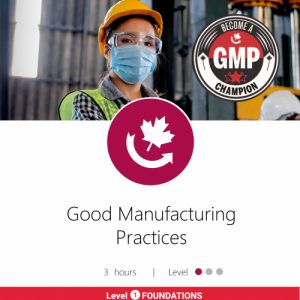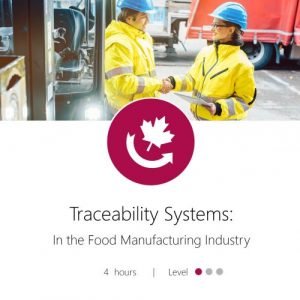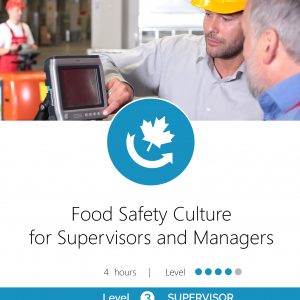
HACCP Fundamentals
$199.00
This course provides an understanding of Hazard Analysis and Critical Control Points (HACCP) and the importance of having a food safety program. This introductory program outlines how every person working at that facility can have either a positive or a negative impact on food safety. Participants should be able to explain the benefits of a HACCP system, understand hazards and how they can be controlled, and the importance of GMP and Prerequisite Programs.
Available!
Return to StoreThis course provides an understanding of Hazard Analysis and Critical Control Points (HACCP) and the importance of having a food safety program. This introductory program outlines how each person working at that facility can have a positive or a negative impact on food safety.
You will learn that food safety hazards are; biological, chemical, or physical substances that can make a food product unsafe to eat and cause illness, injury or death if consumed. You will also learn how biological, chemical, and physical hazards can be harmful to human health and how to prevent and control them.
Learning Objectives:
Once you have completed the course, you will have obtained the skills to understand the importance and benefits of food safety. What a HACCP system is and who invented it including:
- The benefits of a HACCP system
- Hazards and how to control them
- The importance of GMP and Prerequisite Programs
- How to develop and implement a HACCP Plan
- How to maintain and when to review a HACCP system
Reasons HACCP may fail and the most common non-conformities related to HACCP
Course Outline & Major Topics
- What is a Food Safety Program (HACCP System)
- What is HACCP and Who Invented It
- What is Needed For a Successful HACCP System
- Management Commitment
- Importance of Line Workers
- Benefits of the HACCP System
- Food Safety Hazards
- Types of Hazards
- Sources of Hazards
- People/Uniforms
- Equipment/Utensils/Tools
- Equipment/Utensils/Tools
- Incoming Material
- Cleaning
- Outside of Building as Source of Hazards
- Building as a Source of Hazard
- Pest Source of Hazards
- Water as Source of Hazards
- Types of Biological Hazards
- Growth Requirements for Microorganisms
- Chemical Hazards
- Canadian and USA Allergen List
- Physical Hazards
- Controlling of Hazards in any Food Plant
- How Biological Hazards are Controlled
- How Chemical Hazards are Controlled
- How Physical Hazards are Controlled
- How Chemical Hazards are Controlled
- Cross-contamination
- Potential Food Safety Concerns
- Prerequisite Programs
- HACCP Plan
- Step 1: Finished Product (Product Description)
- Step 2: Incoming Materials
- Step 3: Process Flow
- Step 4: Plant Schematic
- Step 5: Hazard Analysis and Control of Hazards
- Control Point
- Step 6: Process Controls (PC)
- Step 7: Critical Control Point
- Critical Control Points Examples
- Critical Limits
- Monitoring
- Monitoring Activities
- Verification of Monitoring Records
- Training of Employees
- Verification of Training
- Step 8: HACCP System Review
- Review of your HACCP System
- Update of your HACCP System when you have changes…
- Reasons why HACCP may fail
- Indicators of a Successful HACCP System
- Employee Guide to GMPs
- HACCP Process Flow
- Meat Cooking Record CCP
- Sample Receiving Record
- SOP Receiving Ingredients
*Receive a nationally recognized certificate for participation in this course
Who Should Take This Course?
- New Hires
- Line Workers
- Supervisory and Management
- Quality Assurance Teams
- Food Safety Teams

